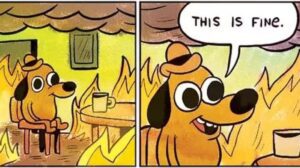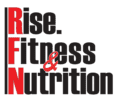Waking Up Stiff After a Workout? You're Not Alone!
Have you ever pushed yourself hard at the gym only to wake up the next morning feeling like you got hit by a truck?
That aching, tender and funny feeling is called Delayed Onset Muscle Soreness (DOMS), and it’s a common (and often very comical) experience for fitness enthusiasts of all levels. But fear not, this soreness especially at the beginning, could be a sign of progress, not defeat!

What are DOMS?
When you engage in strenuous exercise, specifically movements you’re not used to – or are a beginner at – you create tiny tears (or microtraumas) in your muscle fibers.
Your body responds by sending in the “repair crew” to fix these tears, leading to inflammation and that familiar dull ache we call DOMS.
The Pain Timeline:
The good news is DOMS are temporary, generally peaking 24-72 hours after your workout. Here’s the breakdown:
- 4 hours: White blood cells arrive to clean up the damage, triggering a slight discomfort.
- 24 hours: Inflammation kicks in, repair forces are activated, and DOMS sets in.
- 48-72 hours: DOMS peaks, potentially impacting your performance due to the discomfort.
The hilarity also peaks here when simple task like sitting down/standing up or reaching for that mug up in the shelf are now a sore reminder of your workout.

Think of it this way: Imagine a road riddled with potholes after heavy truck traffic. The body’s “road crew” removes the damaged parts, repairs them, and expands the road to handle future stress. This repair process leads to that temporary soreness but then you’ll handle the workout better and better.
Factors Affecting DOMS:
- Training experience: If you are a beginner you are more susceptible as your body needs to adapt to a new stimulus. If you’re more advanced, chances are you simply added an new/different exercise to your routine that you haven’t been doing for some time so you might get slightly sore depending on the exercise.
- Workout intensity and volume: Harder workouts can create more micro-tears, leading to potentially more significant DOMS (and laughs). The stronger you get in the exercise, the lower the chances of developing DOMS as a consequence of the “repeated-bout effect” adaptations in your muscles.
- Exercise type: Generally eccentric movements (e.g., lowering weights) create more damage than concentric ones (e.g., lifting weights).
Now… on to the question that we all have asked ourselves and google at least once.
Should you aim for and chase the DOMS?
While a little soreness is a sign starting some new routine/exercise/activity, it doesn’t necessarily mean you’re progressing and most importantly constant DOMS aren’t necessary or correct a workout effect evaluation metric.
Here’s how to interpret the pain:
- No soreness: As you get stronger, your body adapts, and DOMS may lessen. This is a good thing!
- Occasional soreness: This is normal after new routines/exercises and can happen with sudden increased intensity.
- Chronic soreness: This might indicate
- overtraining,
- lack of recovery,
- improper technique,
- “routine hopping” or continuous changes in your workout routine,
Adjust your routine or get in touch with a trainer to ask for advice.
Remember that “go hard or go home” mentality? Yeah, sometimes it can backfire, especially when DOMS decides to throw you a surprise party the next day.
Now, I’m not saying a little soreness isn’t a badge of honor, but when it becomes chronic or completely impossible to manage, that could be a sign of overtraining or inconsistent workouts.
Think of it like this: imagine your body is a car (or a bicycle if you fancy the two wheels). If you push it too hard all the time without proper rest and maintenance (ahem, consistent training routines, good forms and sleep), you’re setting yourself up for a breakdown.
Randomly, constantly, switching between different workout routines without giving your body time to adapt is like those “never let them know your next move” memes: just chaotic and potentially disastrous on your progress and improvement.
Bonus Tip: Light activity can aid recovery such as walking, while stretching may not necessarily reduce DOMS (read the study review here)
My Epic Staircase Fail: A tale of DOMS
Lastly, let me share with you an hilariously painful DOMS experience from my very own fitness journey.
Back in the day, I went on a 2 days hike all the way up to 2,900 meters (9,500 feet) and back. I knew this would have meant epic muscle soreness the day after but to my surprise when I woke up I was…fine.
here I was thinking to myself “hell, I got very strong and resilient since I have almost zero pain!”
So, I proudly went to work, feeling slightly sore, sure, but invincible inside.
Little did I know, the real party was just starting.
As the day progressed, that “slight” soreness morphed into pure fire, starting from my calves and gradually climbing up my legs like burning lava.
By lunchtime, walking felt like navigating a minefield of hot needles, and my commute back home with its endless flights of stairs and a 4th-floor walkup wasn’t exactly graceful.

Lesson learned: don’t count your chickens before they hatch or, don’t think you’ve escaped DOMS until you pass the 24 hrs mark
In a nutshell
listen to your body, don’t overdo straight from the beginning (especially if you’ve been inactive for quite some time), and embrace a consistent training routine.
Sure, a little DOMS now and then could be a sign of initial progress, but if they become your constant companion, it’s time to re-evaluate your approach.
Remember, DOMS might be funny in hindsight, but the pain during their peak is anything but.
Train smart, recover well, and you’ll be conquering mountains (and stairs).
